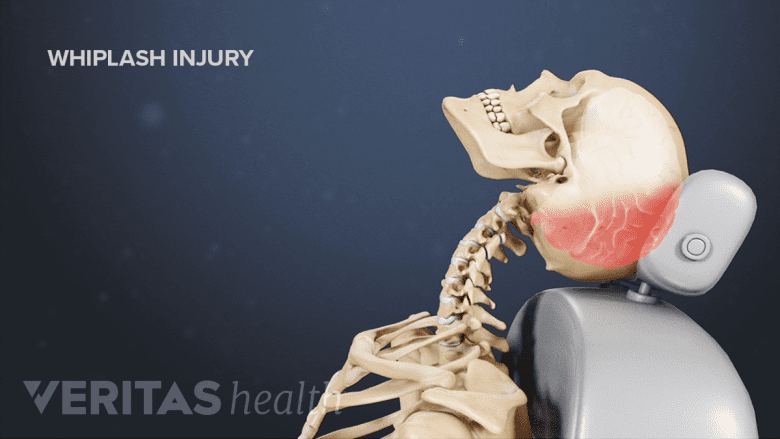Facet joint injections and medial branch blocks aim to treat pain arising from facet joints in the spine. While facet joint injections are given directly into the facet joint, medial branch blocks target the medial branch nerves that carry pain signals from the facet joints to the brain.
In This Article:
- Injections for Neck and Back Pain Relief
- Epidural Steroid Injections
- Selective Nerve Root Block Injections
- Facet Joint Injections and Medial Branch Blocks
- Sacroiliac (SI) Joint Injections
- Radiofrequency Ablation (RFA)
How Facet Joint Injections and Medial Branch Blocks Work
Both facet joint injections and medial branch blocks are used to diagnose and treat pain stemming from facet joints. While treating pain, typically steroids or steroids mixed with anesthetics are used.
See Facet Joint Disorders and Back Pain
The mechanism of pain control is different for facet joint injections and medial branch blocks.
Facet joint injections
Facet joint injections reduce inflammation and control painful symptoms.
Facet joints are surrounded by a joint capsule made up of synovial membrane tissue. This joint capsule contains a rich innervation of nerves and its upper pad is typically fused with the fatty sheath of the spinal nerve.1Peh W. Image-guided facet joint injection. Biomed Imaging Interv J. 2011;7(1):e4. doi:10.2349/biij.7.1.e4
See Cervical, Thoracic and Lumbar Facet Joint Injections
When the synovial membrane tissue of the joint capsule is inflamed, facet joint injections may:
- Inhibit the production of inflammatory chemicals, reducing pain
- Making pain receptors less sensitive, in turn sending fewer pain signals through the nerves
See Facet Joint Injection Procedure
More than one injection may be given to treat pain stemming from several facet joints.
Medial branch blocks
Medial branch blocks are used to diagnose pain originating from a spinal facet.
Medial branch nerves feed out of the spinal nerves’ dorsal rami and typically possess only sensory properties (except for some small branches in the neck that control small muscles). Medial branch nerves richly supply the facet joints. All joint segments below C2-C3 receive medial branch innervation from two levels—the same level as the joint and from a level above the joint.1Peh W. Image-guided facet joint injection. Biomed Imaging Interv J. 2011;7(1):e4. doi:10.2349/biij.7.1.e4
See All About the C2-C5 Spinal Motion Segments
Injecting steroids near the medial branch nerves may:
- Suppress the nerve from sending pain signals to the brain
- Block specific fibers (C fibers) within the nerve that results in a decrease in pain transmitted to the brain
- Decreases the permeability of nerve fibers to receive blood, decreasing pain transmission
See Medial Branch Nerve Blocks
All the medial branch nerves innervating a joint are treated at the same time.
For both types of injection treatments, diagnostic injections include the injection of an anesthetic medication in order to accurately locate the painful facet joint or the corresponding medial branch nerve(s).
Fluoroscopy or ultrasound guidance is done to guide the needle to the accurate treatment region. A contrast dye may be used to enhance the visualization of the joint and/or nerves.
Success Rates of Facet Joint Injections and Medial Branch Blocks
The success rates of facet joint injections and medial branch blocks vary. Studies show that up to 92% of patients may experience pain-relief for a short duration, typically 1 to 4 weeks after the injection.1Peh W. Image-guided facet joint injection. Biomed Imaging Interv J. 2011;7(1):e4. doi:10.2349/biij.7.1.e4 Over time, the symptoms may or may not return. Some patients may need repeat injections to sustain the relief period while other patients may experience complete resolution or long-term pain relief.
See Facet Joint Injection Pain Relief Results
In individuals who experience temporary pain relief, these injections can provide a window of opportunity to make progress on physical therapy and other therapies. Improving the neck or back’s strength and flexibility may lead to better function and long-term pain relief.
See Physical Therapy for Low Back Pain Relief
See Physical Therapy for Neck Pain Relief
When Facet Joint Injections and Medial Branch Blocks are Given

Facet joint injections and medial branch blocks are potential treatments for whiplash injuries.
Facet joint injections and medial branch blocks may be given to treat the following:
- Facet joint syndrome
- Multilevel spinal pain
- Post-whiplash injury
- Chronic pain with normal radiological findings
- Spondylosis
- Post-surgical pain
It is estimated that 10% to 15% of facet joints receive atypical innervations from nerves other than medial branch nerves. For these individuals, a facet injection could be more effective.2Cohen SP, Moon JY, Brummett CM, White RL, Larkin TM. Medial Branch Blocks or Intra-Articular Injections as a Prognostic Tool Before Lumbar Facet Radiofrequency Denervation. Regional Anesthesia and Pain Medicine. 2015;40(4):376-383. doi:10.1097/aap.0000000000000229
Risks of Facet Joint Injections and Medial Branch Blocks
Risks and complications are rare, although spinal cord damage, phrenic nerve damage, chemical meningitis, bleeding, septic arthritis, and infection are possible. Post-injection pain and numbness may occur but usually resolves in a few hours.
- 1 Peh W. Image-guided facet joint injection. Biomed Imaging Interv J. 2011;7(1):e4. doi:10.2349/biij.7.1.e4
- 2 Cohen SP, Moon JY, Brummett CM, White RL, Larkin TM. Medial Branch Blocks or Intra-Articular Injections as a Prognostic Tool Before Lumbar Facet Radiofrequency Denervation. Regional Anesthesia and Pain Medicine. 2015;40(4):376-383. doi:10.1097/aap.0000000000000229

